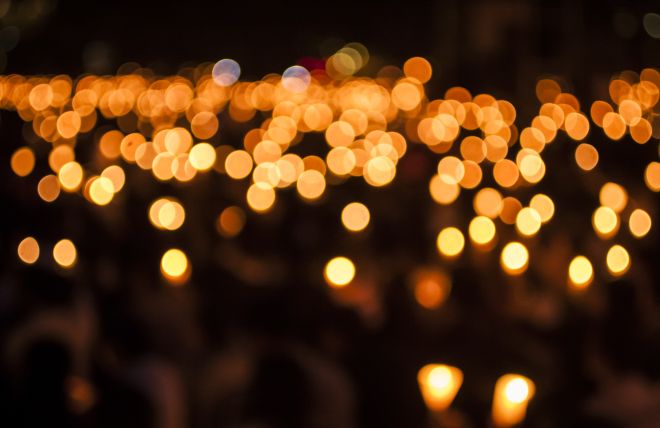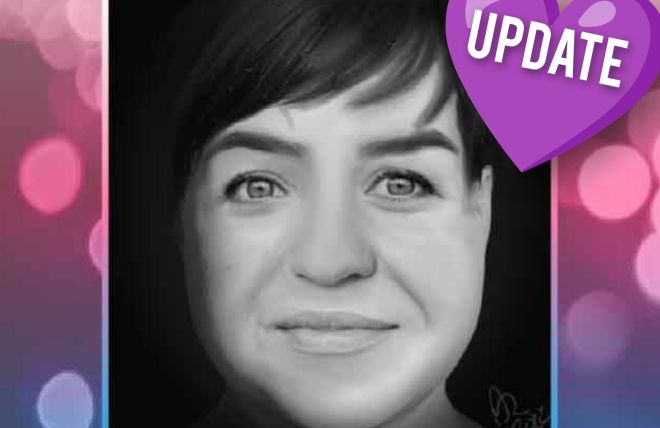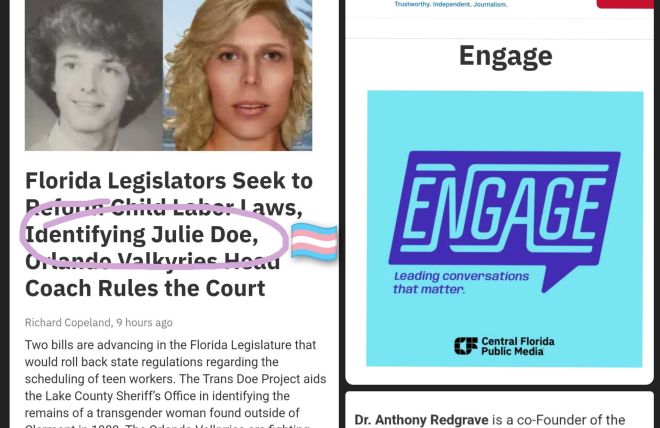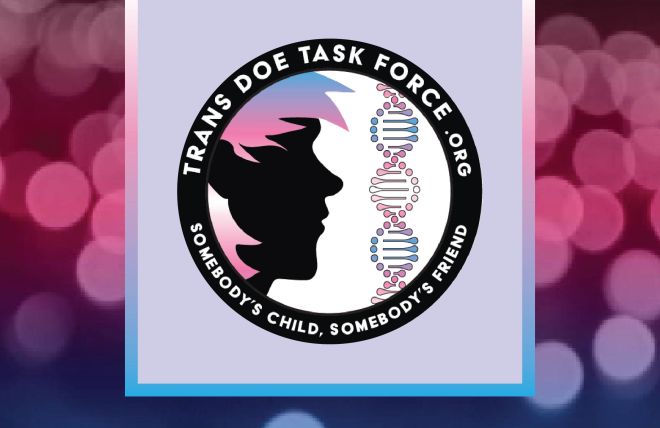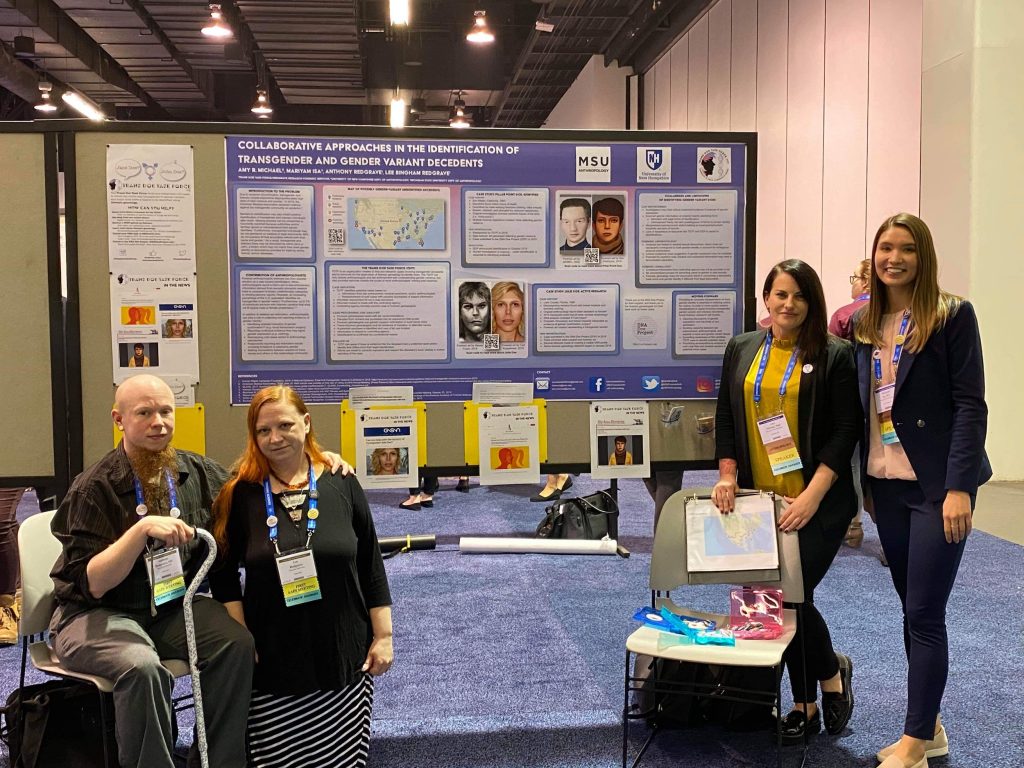
Left to right: Anthony Redgrave, Lee Bingham Redgrave, Dr. Amy Michael, Dr. Mari Isa
by Dr. Amy Michael
Lee Bingham Redgrave and Anthony Redgrave developed the poster together with anthropologists Dr. Amy Michael and Dr. Mari Isa. After 6 months of conversations about how anthropologists could aid genealogists in the identification process, we decided to prepare the poster to raise awareness about identifying transgender and gender variant individuals in forensic cases. Anthropologists are, by training, an inclusive bunch and we believed that our work would be helpful for other researchers who maintained and curated unidentified cold case victims.
In February 2020, we traveled to Anaheim, CA to present a poster at the American Academy of Forensic Sciences (AAFS) conference. Our work was very well received by the forensic community, with students and professionals alike reaching out to us for more information or to discuss cases. The abstract for the poster can be found in the 2020 Proceedings of the AAFS.
See the poster in PDF format on Researchgate
A summary of our abstract is found below:
In cases involving skeletal remains, positive identification requires both osteological expertise and the ability to translate biological and contextual information into a culturally-appropriate representation of gender identity expressed during life. Anthropologists are uniquely suited to address the issue of identifying transgender and gender variant individuals in forensic cases.
As osteological specialists, forensic anthropologists routinely estimate sex as part of the biological profile, often the first step toward identification. However, an increasing percentage of the U.S. population (up to 3.0% or 9.8 million people)1 identifies as transgender or gender variant, thus complicating the estimation of sex as a factor in positive identification. Traditional sex estimation methods, while largely successful for cisgender individuals, may be insufficient for cases involving transgender individuals.
A recent report demonstrates that, as a result of systemic discrimination, transgender individuals experience disproportionately high rates of fatal violence and suicide.4 This same discrimination also creates barriers to identification in death. Missing persons may be unreported or incorrectly reported because authorities or families refuse to acknowledge their gender identities.4 Furthermore, transgender people may be misgendered on medical or legal documents on file; 68% do not possess ID that accurately reflects both their name and gender.4 As a result, transgender Does may be described as either Jane or John, which may not match their lived gender or descriptions provided for them.
The Anthropology section of AAFS has actively worked toward increasing diversity and inclusion in the section and in anthropological research in recent years (e.g., Warren, Bouderbaden, Winburn, Bird, Tallman, Stubblefield). However, the problem of identifying transgender and gender variant decedents remains under-examined in our field. In this presentation, we focus on one potential avenue toward identification resolution: collaboration with the Trans Doe Task Force (TDTF), an organization created to find and research cases involving transgender and gender variant decedents. Forensic genealogy is, in part, the application of genealogical research to the positive identification process. To date, AAFS does not recognize forensic genealogy as a forensic discipline due to an insufficient number of practitioners in its membership. We posit that the TDTF is an important component of the growing conversation around challenges in identifying transgender victims in the field of forensic anthropology.
The necessary steps in case identification are presented to illustrate a successful research process and submission to forensic genealogists. Traditional (e.g. NamUs) and non-traditional means (e.g. archived LGBTQ+ zines, Trans Day of Remembrance lists, Facebook pages dedicated to missing and murdered transgender victims, etc.) are used during case research; these factors will be of interest to forensic anthropologists who suspect they may be working on cases involving transgender individuals. Additionally, the case study will demonstrate why and how sex estimation methods should be augmented in cases of transgender victims. Finally, a discussion of the possible privacy concerns and case access issues involved in a combined forensic genealogy/anthropology approach will be reviewed.
In some cases, the translation of forensic genealogical data, in association with thorough police investigation and forensic sex estimation, are all necessary to resolve identity in cases of transgender decedents. A thoughtful, culturally-informed approach that is anchored by an appreciation of gender diversity and identity in marginalized populations will better serve the victim by more quickly resolving identifications and honoring the lived identity of the decedent.
